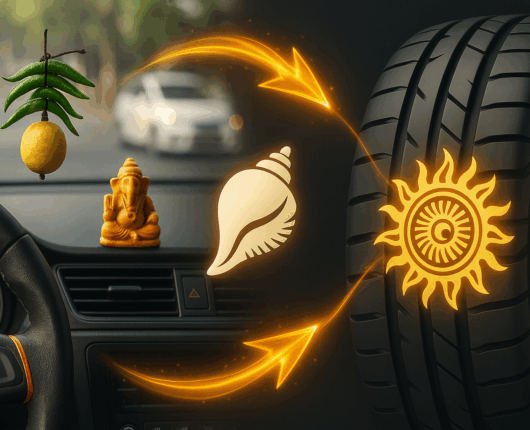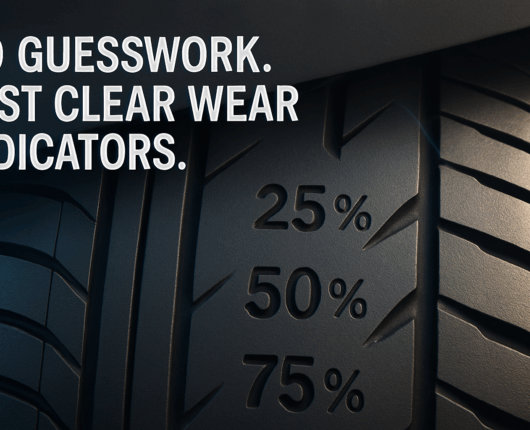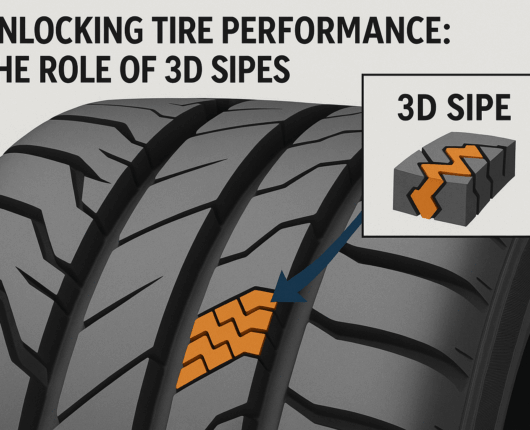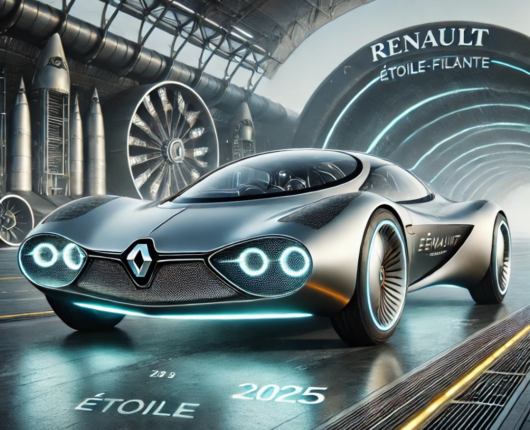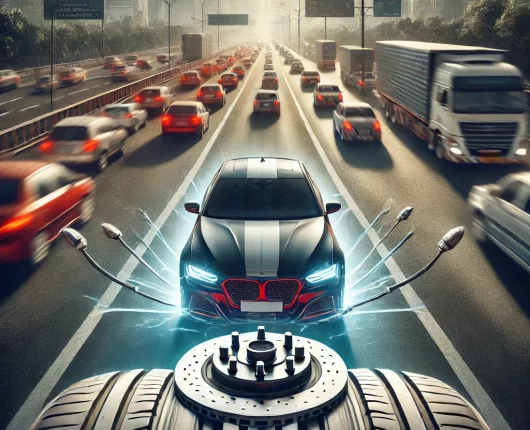-
 By Anil Trivedi
By Anil Trivedi
- January 28, 2025
- 0 Comments
- Car Tyres
The Heartect E-Platform is a cutting-edge vehicle architecture developed by Maruti Suzuki and its parent company, Suzuki Motor Corporation, primarily for their electric vehicles (EVs). It is an evolution of Suzuki’s Heartect platform, which is widely used for lightweight and efficient internal combustion engine (ICE) vehicles, but tailored specifically for EVs to accommodate the unique requirements of electric drivetrains and batteries.
Key Features of Heartect E-Platform:
-
Lightweight Construction: The platform focuses on reducing overall weight to maximize the efficiency and range of electric vehicles. It uses advanced materials and structural reinforcements to ensure both strength and weight savings.
-
Battery Integration: Designed to house large, high-capacity battery packs, the platform ensures optimal placement of batteries to lower the center of gravity, improving stability and driving dynamics.
-
Safety Enhancements: The Heartect E-Platform incorporates enhanced safety measures, such as improved crash absorption zones, to protect passengers and the battery in the event of an accident.
-
Scalability: It is modular and scalable, meaning it can underpin a variety of vehicle types, including hatchbacks, sedans, SUVs, and crossovers, making it versatile for future EV models.
-
Efficiency-Oriented Design: The platform prioritizes aerodynamics and integrates lightweight, energy-efficient components to extend the range of electric vehicles.
This platform is expected to power Suzuki and Maruti Suzuki’s upcoming electric vehicle lineup, starting with models like the Maruti Suzuki eVX, which is set to debut soon. The Heartect E-Platform represents a significant step forward in Suzuki’s journey toward electrification and sustainable mobility
The Heartect E-Platform impacts tire performance in several ways due to the unique design and characteristics of electric vehicles (EVs). Since EVs, like those built on the Heartect E-Platform, differ significantly from traditional internal combustion engine (ICE) vehicles, tires need to adapt to meet these specific requirements. Here’s how:
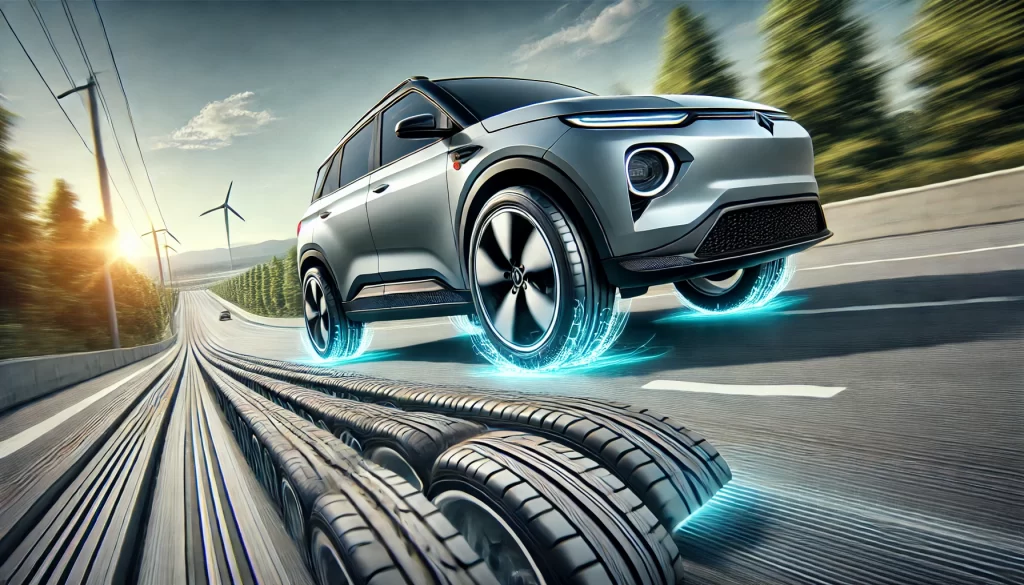
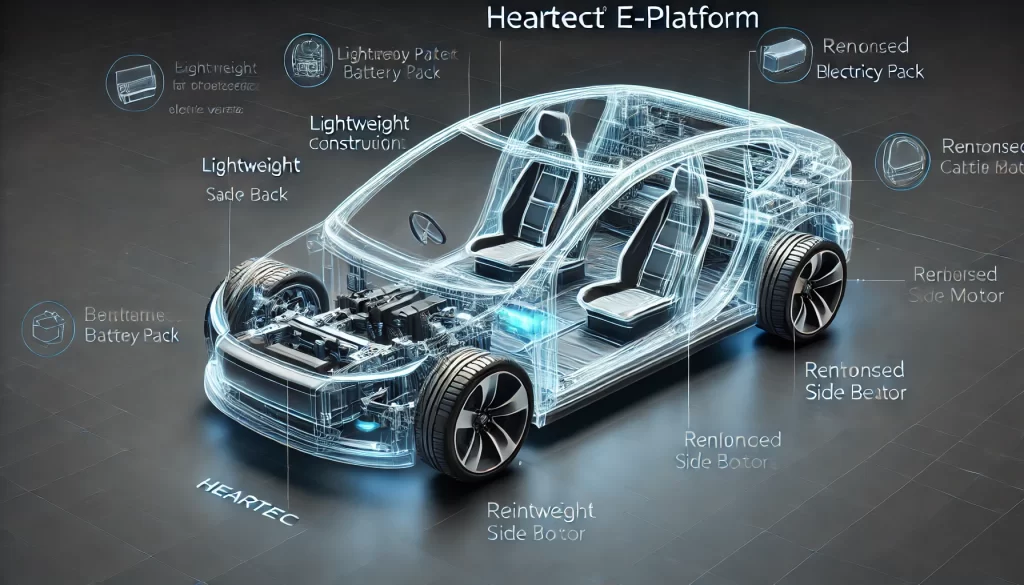
1. Increased Weight of EVs:
- Impact: EVs are heavier than ICE vehicles due to the large battery packs integrated into their design.
- Effect on Tires: Tires need to be reinforced with higher load ratings and stronger sidewalls to handle the additional weight without compromising performance or safety. This can lead to increased wear if the tires are not specifically designed for EVs.
2. High Torque Output:
- Impact: EVs deliver instant torque, which can put more stress on tires during acceleration.
- Effect on Tires: Tires for EVs require better grip and enhanced tread durability to prevent premature wear and maintain traction under high torque loads.
3. Aerodynamics and Low Rolling Resistance:
- Impact: The Heartect E-Platform is designed for efficiency, which also requires tires to contribute to the vehicle’s overall energy efficiency.
- Effect on Tires: EV-specific tires often have optimized tread patterns and materials to reduce rolling resistance, which improves range without sacrificing performance.
4. Noise, Vibration, and Harshness (NVH):
- Impact: EVs are quieter than ICE vehicles, making tire noise more noticeable.
- Effect on Tires: Tires must be designed with noise-reducing technology (like foam layers or specially designed tread patterns) to minimize road noise and enhance the quiet driving experience.
5. Durability and Longevity:
- Impact: The heavier weight and higher torque can reduce tire lifespan if not accounted for.
- Effect on Tires: Manufacturers are developing tires with improved compounds and structural designs to extend the life of EV tires while maintaining performance.
6. Regenerative Braking:
- Impact: EVs use regenerative braking, which applies different forces on the tires compared to traditional braking systems.
- Effect on Tires: Tires need to be robust enough to handle the varying braking forces and provide consistent performance during regenerative braking.
7. Optimized Tread Design:
- Impact: The Heartect E-Platform emphasizes efficiency, requiring tires to align with this goal.
- Effect on Tires: Tires for vehicles on this platform often feature low-profile designs and tread patterns optimized for wet and dry traction, ensuring safety and efficiency.
Vehicles based on the Heartect E-Platform require specialized EV tires that balance durability, grip, low rolling resistance, and noise reduction. Tire manufacturers will need to innovate to meet these demands, creating products that enhance the performance, safety, and range of electric vehicles.
Carbon Footprint: Reducing Emissions Throughout the Vehicle Lifecycl
One of the most significant contributions of the Heartect E-Platform is its potential to reduce the carbon footprint of vehicles.
- Lightweight Construction: The platform’s lightweight design decreases energy consumption, ensuring EVs use less electricity per kilometer. This results in fewer upstream emissions from energy generation.
- Encouraging EV Adoption: By creating efficient and affordable EVs, the platform accelerates the transition from ICE vehicles to EVs, significantly reducing tailpipe emissions.
- Battery Optimization: Proper integration of high-capacity batteries improves energy storage and discharge efficiency, extending range and reducing charging frequency, thereby lowering associated emissions.
Through its focus on efficiency, recyclability, and promoting the shift to electric mobility, the Heartect E-Platform is making strides in addressing the automotive sector’s environmental challenges.
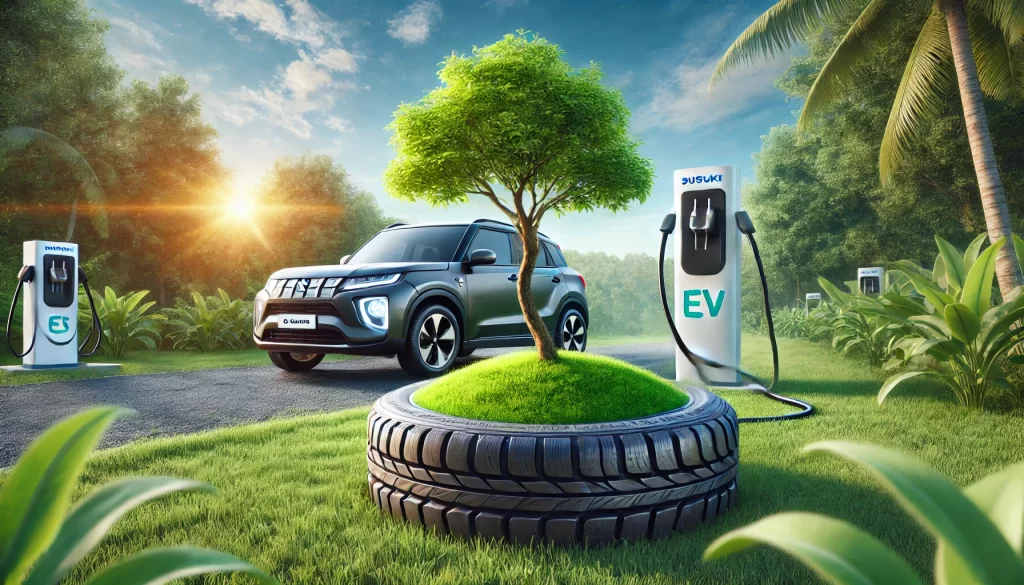
Sustainability: A Step Toward a Greener Future
The E-Vitara and the Heartect E-Platform reflect Maruti Suzuki’s commitment to reducing environmental impact.
- Lightweight Design: The platform’s lightweight construction reduces energy consumption, ensuring that the E-Vitara uses less power per kilometer.
- Component Longevity: By integrating advanced tire and battery technologies, the platform extends the lifespan of key components, reducing the need for frequent replacements and minimizing waste.
- Recyclability: The platform supports the use of recyclable materials for both tires and structural components, addressing end-of-life concerns.
- Lower Energy Demand: Efficient aerodynamics and energy-saving features minimize the carbon footprint during the E-Vitara’s operational life.
Incorporating sustainability into every detail, the E-Vitara sets a new benchmark for eco-friendly design in the compact SUV market.
The Heartect E-Platform and the E-Vitara: A Vision for the Future
The launch of the E-Vitara is more than just a product release; it’s a bold step toward a greener and more sustainable automotive future. With its lightweight design, advanced tire compatibility, and focus on energy efficiency, the Heartect E-Platform represents the pinnacle of modern EV technology.
As the E-Vitara hits the roads, it marks the beginning of a new chapter in sustainable mobility—one where performance, tire efficiency, and environmental responsibility coexist seamlessly. In doing so, Maruti Suzuki not only sets the stage for its EV lineup but also reinforces the importance of reducing our collective carbon footprint.
With platforms like Heartect E and vehicles like the E-Vitara, the journey toward eco-conscious transportation is not just a dream; it’s a reality taking shape.



